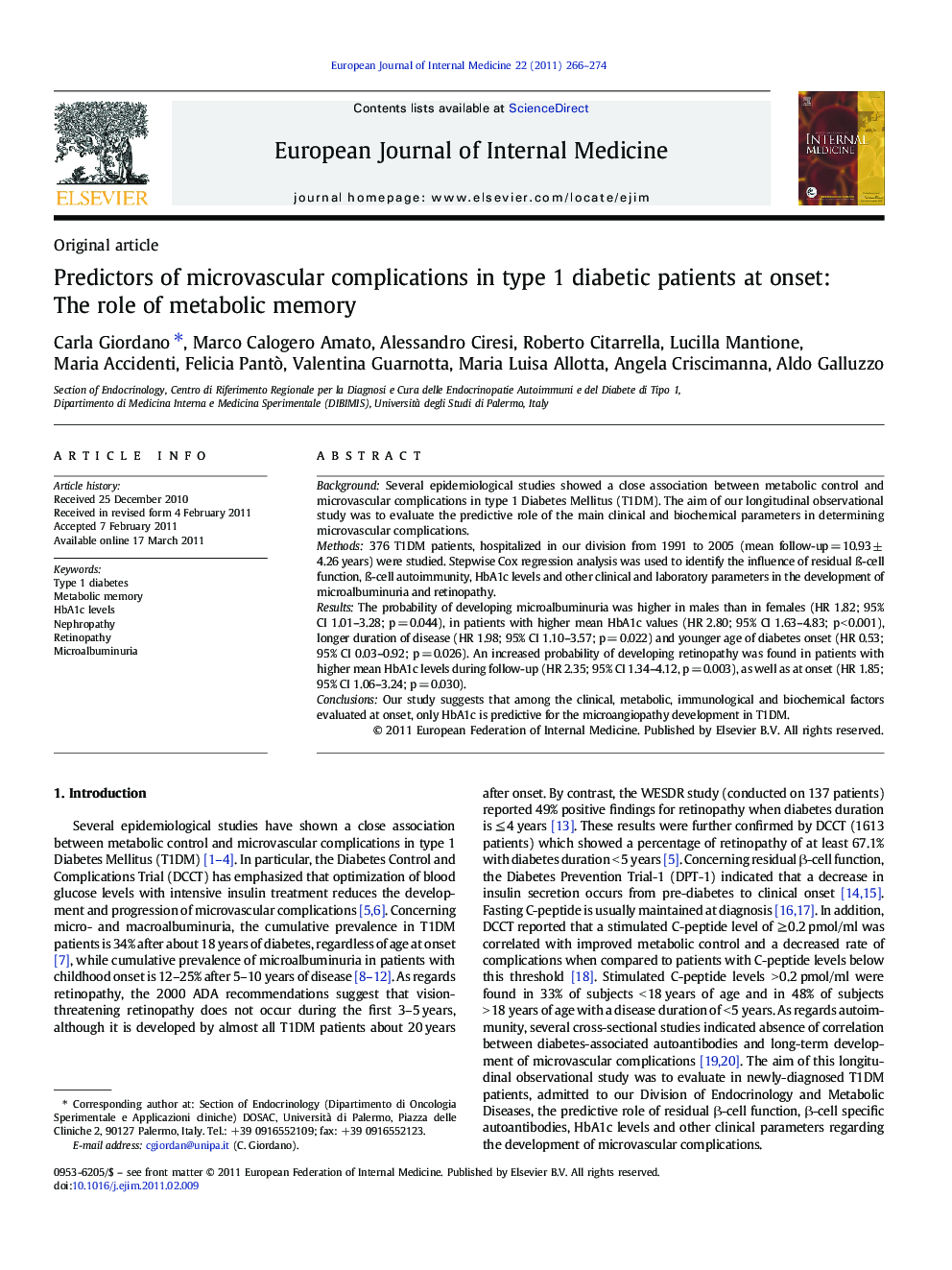| Article ID | Journal | Published Year | Pages | File Type |
|---|---|---|---|---|
| 3468088 | European Journal of Internal Medicine | 2011 | 9 Pages |
BackgroundSeveral epidemiological studies showed a close association between metabolic control and microvascular complications in type 1 Diabetes Mellitus (T1DM). The aim of our longitudinal observational study was to evaluate the predictive role of the main clinical and biochemical parameters in determining microvascular complications.Methods376 T1DM patients, hospitalized in our division from 1991 to 2005 (mean follow-up = 10.93 ± 4.26 years) were studied. Stepwise Cox regression analysis was used to identify the influence of residual ß-cell function, ß-cell autoimmunity, HbA1c levels and other clinical and laboratory parameters in the development of microalbuminuria and retinopathy.ResultsThe probability of developing microalbuminuria was higher in males than in females (HR 1.82; 95% CI 1.01–3.28; p = 0.044), in patients with higher mean HbA1c values (HR 2.80; 95% CI 1.63–4.83; p < 0.001), longer duration of disease (HR 1.98; 95% CI 1.10–3.57; p = 0.022) and younger age of diabetes onset (HR 0.53; 95% CI 0.03–0.92; p = 0.026). An increased probability of developing retinopathy was found in patients with higher mean HbA1c levels during follow-up (HR 2.35; 95% CI 1.34–4.12, p = 0.003), as well as at onset (HR 1.85; 95% CI 1.06–3.24; p = 0.030).ConclusionsOur study suggests that among the clinical, metabolic, immunological and biochemical factors evaluated at onset, only HbA1c is predictive for the microangiopathy development in T1DM.
